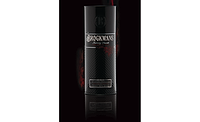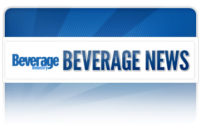Primary packaging influences labeling material choices
Shrink sleeves gain usage with contoured, canned packages

There are many aspects of a beverage package that can be crucial when the consumer is making their final purchase decision. As beverage-makers look to differentiate their products via packaging design, many have begun to choose new primary packaging formats or are changing the shape of their primary package to provide shelf appeal. These primary packaging changes and growing competition within the market are resulting in changes to the types of labels beverage-makers are utilizing to help create a product’s identity.
“There continues to be an increasing use of plastic bottles and aluminum cans for beverage products,” explains Gwen Chapdelaine, marketing director at Elk Grove, Ill.-based Fort Dearborn Co. “For aluminum cans, we’ve seen a growth in the use of shrink sleeves replacing direct printing. Sleeves give brands volume and versioning flexibility.
“The trend for clear/clean labeling has increased the popularity of materials to better showcase the product contents,” she adds.
Louis Iovoli, senior vice president of Rochester, N.Y.-based Hammer Packaging, also notes the impact primary packaging plays on the labeling process.
“The primary package has a huge influence on label selection,” he explains. “What is it made of, how is it run in production, what happens to the container in production, shipping, etc.? The label selection needs to meet the goal of the entire production chain and accomplish marketing goals. For example, as companies seek bottle shapes that would be more visually appealing to consumers, you see an increase in shrink sleeve demand to accommodate the bottle needs, and so forth.”
Among one of the most notable beverage categories updating its labeling is craft beer, as well as other craft segments, like craft spirits and sodas, according to Kristen Melison, project manager of rigid films at Avery Dennison, Glendale, Calif.
“I’m seeing a lot more growth of clear [bi-axially oriented polypropylene] BOP film being used within the craft segment,” she said. “… What’s interesting that we see in craft beer is how it has evolved past just bottles and cans, there’s the role of growlers and crowlers and now the different kinds of kegs you can get. That’s just been an interesting evolution that we’ve seen over the past couple of years.”
She notes that the clear BOP offers a no-label, more premium look to canned beverages while also offering low minimum order and less expense.
“In addition to papers and films, we offer a whole range of shrink-sleeve labels as well. We do have shrink sleeve materials, which give you that 360-degree graphic design that really help brands pop off the shelf. They have great color, and usually great labels come from those materials as well,” Melison says.
Avery Dennison offers BOP rigid films, along with semi-formable and formable rigid films, among many other options including paper labels, which can be used for labeling beverage products, Melison adds.
In line with this, premium products also are having an influence on labeling material selection, notes Hammer Packaging’s Iovoli.
“Premium beverages are focused on getting the consumer to connect with their brand,” he explains. “To accomplish this, they use the package as a whole to give the consumer an experience or interaction, (i.e., This can be the combination of the container shape with a shrink sleeve and a pearlized ink, or a smooth-wall glass bottle with a clear pressure-sensitive label using screen printing.”
He highlights that the move toward uniquely shaped containers has resulted in an increased demand for shrink-sleeve labeling, which has the ability to enhance the shape of the primary package, thus garnering more attention from the consumer what the product is on the shelf.
Fort Dearborn’s Chapdelaine adds that the premiumization of beverages also has resulted in the use of premium labeling and specialty papers, like clear films, uncoated paper and wood veneer substrates.
Sustainability is another aspect impacting labeling materials. Coming in a variety of forms, this trend toward producing packaging that’s better for the environment is becoming a norm for the beverage industry, Iovoli says.
“Packaging engineers are now looking at the package before commercialization and trying to make it neutral to the environment,” Iovoli explains. “They want materials that are compatible to the recycling structure for the particular container material. This is the new normal for our market. Materials all need to work in unison to minimize the impact of the container to the environment.”
However, Avery Dennison’s Melison notes that sustainability concerns in regards to labels have primarily focused on PET packaging items and the adhesives used to attach labels to them.
“As far as sustainability, we’re starting to hear more and more about that, and we’re seeing it have an impact on more PET containers,” she explains.
Melison notes that sustainability will play a bigger part in labeling materials, including adhesives, going forward.
Fort Dearborn’s Chapdelaine adds that downgauging of PET packaging continues to be a major part of the sustainability trend.
“Sustainability trends have translated into thinner materials (downgauging) as bottles have been lightweighted and developments with material to support recycling efforts,” Chapdelaine says. “Fort Dearborn offers thin-gauge film and paper label options as well as floatable shrink-sleeve labels that meet [advanced plastic recycling] (APR) recyclable guidelines for PET containers.”
Finding what’s right
Several factors should be considered as beverage-makers develop labeling for a product. Avery Dennison’s Melison notes that the choice in adhesives is essential to consider.
“It all goes back to what the actual end-use application [is] and how the container or bottle or can is being labeled. Is it being labeled dry, does the can or bottle have significant condensation? We have adhesives that fit all of those needs depending on the end-use application and how that container is being labeled.”
Yet, Fort Dearborn’s Chapdelaine notes that the continued lightweighting and shift toward more contoured primary packaging can impact which label materials will work best for a product.
“There are a lot of material options available for beverage labeling, from paper to film,” Chapdelaine says. “Depending on the objectives of the brand, the material used can help convey the message (i.e., uncoated for natural or artisanal look) and provide function, such as film labels for beverages that need moisture resistance (i.e., ice buckets). We have seen a trend toward the use of more shrink sleeves on can beverage products. Shrink sleeves offer flexibility with print options, quantities and customization versus pre-printed cans. Stretch-sleeve labels also offer similar billboard space to that of shrink sleeve without the need for an application tunnel.”
But choosing the right material isn’t the only important aspect of a beverage’s label, Chapdelaine notes.
“Aside from the different materials, inks, coatings and finishing options are another way to make labels more impactful, including: digital (personalization, variable imaging), fluorescent, foil, glow-in-the-dark, holographic, matte, metallic, pearlescent, scented, soft touch, tactile, thermochromic. We’ve seen an increase in the use of various special effects as well as digital personalization by brands looking for differentiation on shelf.”
She adds that Fort Dearborn offers many paper and film substrates, along with design and finishing effects for beverage labeling.
Hammer Packaging’s Iovoli notes that a beverage-maker should work hand-in-hand with their labeling and packaging suppliers to make the right decision for their products.
“Hammer has a dedicated technical team that works directly with our customers to determine the best materials for each project based on a number of criteria, including overall objective, budget, need, etc.,” he explains. “We would recommend having a consultation at the onset of a project to partner for the best solution. In general, from the beverage-maker, they should consider marketing goals, production capability to meet the marketing goal, and then most-efficient label to get there.”
Hammer also provides a plethora of labeling solutions for beverage-makers, including shrink sleeves, cut-and-stack, pressure-sensitive and roll-fed labels, among others, Iovoli says.
Looking ahead, Fort Dearborn’s Chapdelaine predicts that sustainability, shelf impact, functionality and digital printing will drive innovation.
Hammer Packaging Iovoli notes that shorter runs with more graphic changeovers are on the horizon. Additionally, he anticipates that variable printing will create new ways to enhance the consumer experience. BI
Looking for a reprint of this article?
From high-res PDFs to custom plaques, order your copy today!







